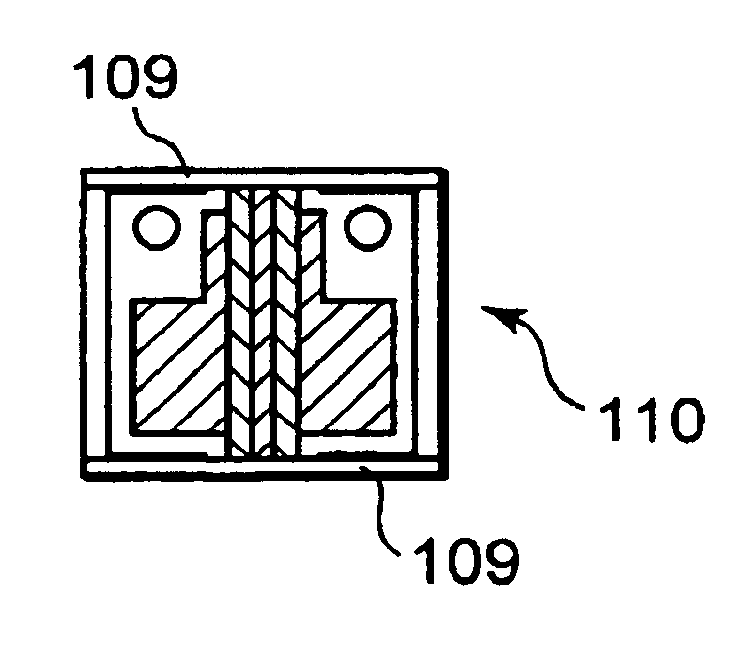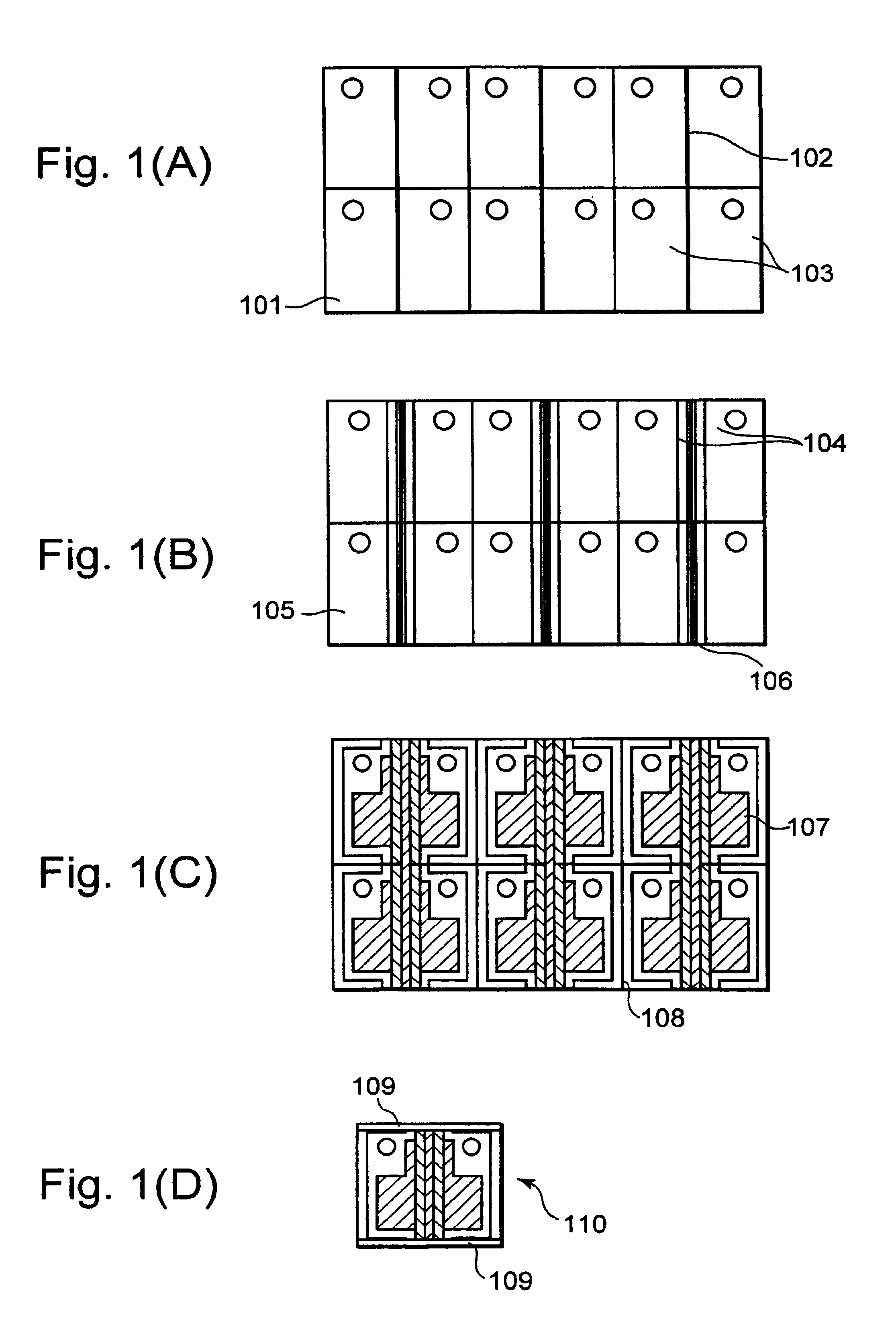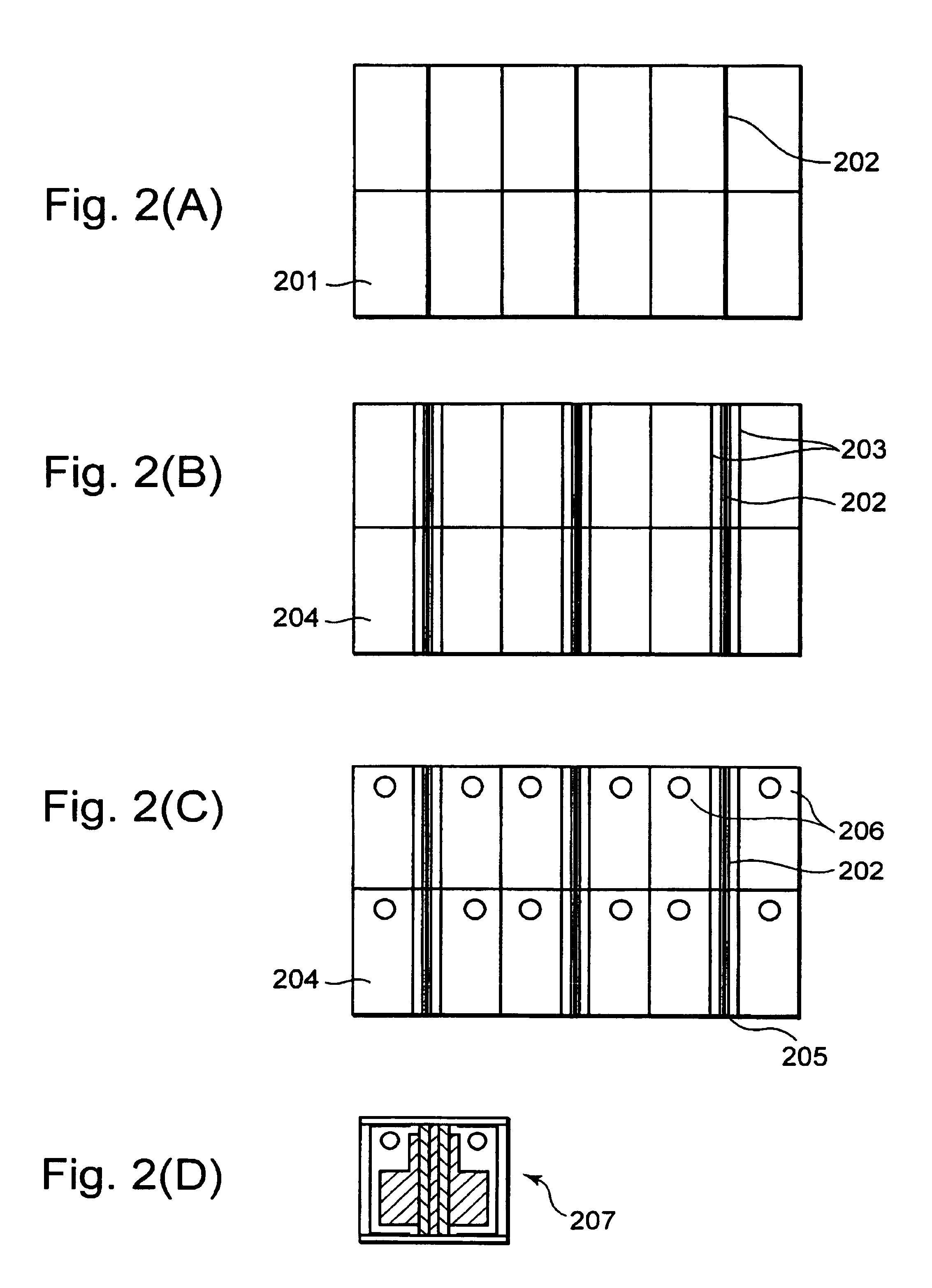Method of forming a semiconductor laser chip having a marker
- Summary
- Abstract
- Description
- Claims
- Application Information
AI Technical Summary
Benefits of technology
Problems solved by technology
Method used
Image
Examples
first embodiment
[0014]FIGS. 1(A) through 1(D) are forming process diagrams of a semiconductor chip, showing the present invention.
[0015]As shown in FIG. 1(A), ohmic contact electrode lines 102 and markers 103 are first formed on the junction side of an InP substrate 101 having an active layer and a block layer. The ohmic contact electrode lines 102 and the markers 103 are respectively composed of AuZu and simultaneously formed by lift-off. Thereafter, sintering is performed to ensure ohmic contacts between the ohmic contact electrode lines 102 and the InP substrate 101.
[0016]Next, as shown in FIG. 1(B), the InP substrate 101 is etched to form W channels 104. Thereafter, a silicon oxide film 105 for current narrowing is formed over the whole surface. Further, afterwards, the silicon oxide film 105 is etched to open line patterns 106 of electrode contact portions on their corresponding ohmic contact electrode lines 102.
[0017]As shown in FIG. 1(C), mounting electrodes 107 are respectively formed on th...
second embodiment
[0021]A second embodiment of the present invention will next be explained with reference to FIGS. 2(A) through 2(D). FIGS. 2(A) through 2(D) are forming process diagrams of a semiconductor chip, showing the present invention.
[0022]As shown in FIG. 2(A), ohmic contact electrode lines 202 are first formed on the junction side of an InP substrate 201 having an active layer and a block layer. The ohmic contact electrode lines 202 are respectively composed of AuZu and formed by lift-off. Thereafter, sintering is performed to ensure ohmic contacts between the ohmic contact electrode lines 202 and the InP substrate 201.
[0023]Next, as shown in FIG. 2(B), the InP substrate 201 is etched to form W channels 203. Thereafter, a silicon oxide film 204 for current narrowing is formed over the whole surface. Further, afterwards, as shown in FIG. 2(C), the silicon oxide film 204 is etched to simultaneously form line patterns 205 of electrode contact portions and markers 206 on their corresponding oh...
PUM
 Login to view more
Login to view more Abstract
Description
Claims
Application Information
 Login to view more
Login to view more - R&D Engineer
- R&D Manager
- IP Professional
- Industry Leading Data Capabilities
- Powerful AI technology
- Patent DNA Extraction
Browse by: Latest US Patents, China's latest patents, Technical Efficacy Thesaurus, Application Domain, Technology Topic.
© 2024 PatSnap. All rights reserved.Legal|Privacy policy|Modern Slavery Act Transparency Statement|Sitemap



